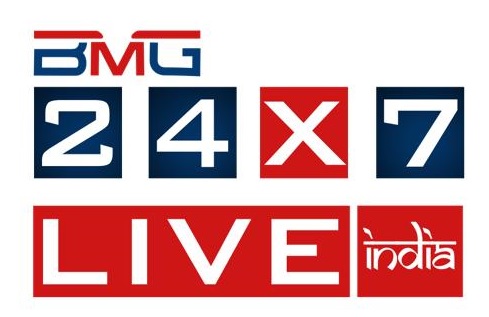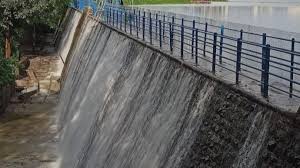BJP’s sudden 'love' towards Naada Geethe, Kannada Flag

By Muralidhara Khajane
Bengaluru: With sixty days left for the 66th Kannada Rajyotsava (the foundation day of Karnataka) celebration, the Bharatiya Janata Party (BJP) led government appears to be showing its inclination to take decades-old two major unresolved issues to a logical end.
Minister for Kannada and Culture, Sunil Kumar hinted at resolving long-drawn controversy surrounding Naada Geethe (state anthem) and Naada Dhwaja (state flag) issues at Udupi on August 27 by stating that; “It has been decided to accord specific form to the picture of Kannada goddess Bhuvaneshwari and State anthem. There is no question of trimming the content, tone, and tenor of Naada Geethe- Jaya Bharata Jananiya Tanujate penned by Jnanapity recipient writer Rashtra Kavi Kuvempu. But the duration of Alaap (the improvised section of raga forming a prologue to the formal expression) will be curtailed. A final call will be taken on the state flag issue, after taking opinions of experts”.
He also said that; final call on standardisation of State Anthem will be taken during the 10-day legislature session, which will commence from September 13.
It is significant that Kuvempu wrote Jaya Bharata Jananiya Tanujaate in 1930 and he termed the land as “Karnataka”, even before it got its official status as Karnataka in 1956. In fact, Karnataka is one of the few states in the country which has its own official state anthem. Jaya Bharata Jananiya Tanujaate is an ode to the state, its glorious history, tradition, culture, and breath-taking beautiful landscape. This poem was officially declared as the State Anthem on January 6, 2004. Since then there has been a demand for reducing the duration of the song, which currently varies between and four and five minutes depending on the rending, as this anthem is being rendered differently by different people.

Expert committees
The government has not been able to standardize the length of the state anthem or the tune because of the dispute between two schools of light music, as the anthem has been tuned earlier by two great music composers Mysore Ananthaswamy and C Ashwath. The government is afraid of the fact that, standardisation of one will sure to offend the other.
So far three expert committees, including the one formed to accord official status to Jaya Bharata Jananiya Tanujaate have been formed since 2003. The first committee was formed during the Congress regime of S M Krishna. The song got the official status of state anthem during the birth centenary of Kuvempu.
In view of the objections raised on the interpretations and omissions in the poem, another committee was constituted during the BJP government. It is significant that the BJP government did not act on the recommendations of its own official panel. Later another committee was formed under the chairmanship of noted musician Vasanth Kanakapure, retaining the members of the previous committee. With the sudden demise of Vasanth Kanakapure, renowned poet Channaveera Kanavi took over the chairmanship of the committee. This Panel suggested trimming the duration of the length of rendering from four minutes to 90 seconds.
When successive governments failed to take a final call on the recommendations of the three expert committees, Kannada Sahitya Parishat (KSP-representative body of Kannadigas) stepped in to end 15-year old controversy over the length and standardisation of the State Anthem and in November 2019 KSP recommended the government to fix the rendering duration to 2.30-minutes. Again the BJP government is making its last-ditch effort to put an end to the 17-year old controversy and make the people to render state anthem effortlessly.
The controversy surrounding state flag
Similar is the predicament of Naada Dhwaja (State flag). Though the demand for having a separate state flag is decades old, it gained momentum only when the government constituted an expert committee to study and submit a report to the government on designing a separate flag for the state and providing statutory standing for that.

Following a representation from journalist-writer Patil Puttappa and social worker Bheemappa Gundappa Gadada of Belgaum to the government, in July 2017, the government formed an expert committee. People of Karnataka were elated with the Congress government in Karnataka headed by Siddaramaiah, deciding to have a separate state flag and sending a proposal in this regard to the Union Home Ministry to get statutory standing for it.
Interestingly the Karnataka government took this decision two months ahead of Assembly polls and BJP led NDA government at the Centre, which is chanting ‘one-nation mantra’ Separate state flag is one among the major Kannada issues by the ruling Congress trying to ignite regional pride and invoke the value of federalism. The Committee constituted by the government was comprised of Secretary Department of Personnel and Administrative Services, Home, Law and Parliamentary Affairs, President Kannada Sahitya Parishat, Chairman Kannada Development Authority, Vice-Chancellor Kannada University Hampi and Director, Department of Kannada and Culture.
What prompted the Congress government to constitute an official committee, while bi-colour flag representing Kannada was largely accepted is really interesting. During his tenure as the Chief Minister, B S Yeddyurappa removed restrictions on hoisting Kannada flags on government buildings in 2008. D V Sadananda Gowda, who replaced him, made hoisting of Kannada flags on government offices and schools compulsory. However, the government’s move was questioned in Karnataka High Court as to “whether it is possible for the State to have any flag other than the national flag. Maharashtra Ekikarana Samithi (MES) questioning hoisting of the Kannada flag in Belagavi resulted in Bheemappa Gadada to appeal the state government for a separate state flag with statutory recognition.
For the reasons best known, the expert committee did not meet for long. With increase in pressure members of the Committee met thrice and submitted its report, after finalising the design. The flag designed by the committee has similarities to the national tri-coloured one, with the incorporation of the emblem of Karnataka.
After the Assembly elections of 2018, governments headed by H D Kumaraswamy and B S Yeddyurappa did not pursue the proposal with the Union government. In August 2019, the Yeddyurappa government decided to drop the proposal formally. The Minister for Kannada and Culture C T Ravi asserted the decision of the government by citing “one nation and unity” reasons. But, Sunil Kumar, now raked up the issue again by hinting at the government’s intention to consult the experts on the issue.
Questions on authenticity of Bhuvaneshwari

The controversy surrounding an authentic picture of Bhuvaneshwari Kannada goddess is still more interesting. There are two temples of Bhuvaneshwari in Karnataka; one at Hampi in Hospet district and another in Siddapura taluk of Uttara Kannada district. Siddapura town panchayat website claims Bhuvanagiri’s Bhuvaneshwari is the original Kannada Bhuvaneshwari, as Banavasi, the capital of Kadambas (345 CE-525 CE), an ancient royal dynasty of Karnataka. However, the statue is believed to be of the 17th century. Historians and scholars favour the Pampambiga goddess at Hampi as Bhuvaneshwari citing inscriptions of 11th century. The idea of Kannada Bhuvaneshwari was an important rallying point during the unification of Karnataka.
B S Yeddyurappa during his tenure had taken the initiative of installing the idol and earmarked Rs.25-crore for the purpose, just a few days before the second Vishwa Kannada Sammelana, held in 2011. Enthused by the Karnataka government’s new zeal for Kannada advocacy- a group of litterateurs have renewed their demand for installing a statue of Kannada Bhuvaneshwari in Bengaluru and appealed to Siddaramaiah to appoint an expert committee to create a visual representation of Bhuvaneshwari.
Now it is again the turn of BJP government to create an authentic Bhuvaneshwari picture and standardise the same.

















